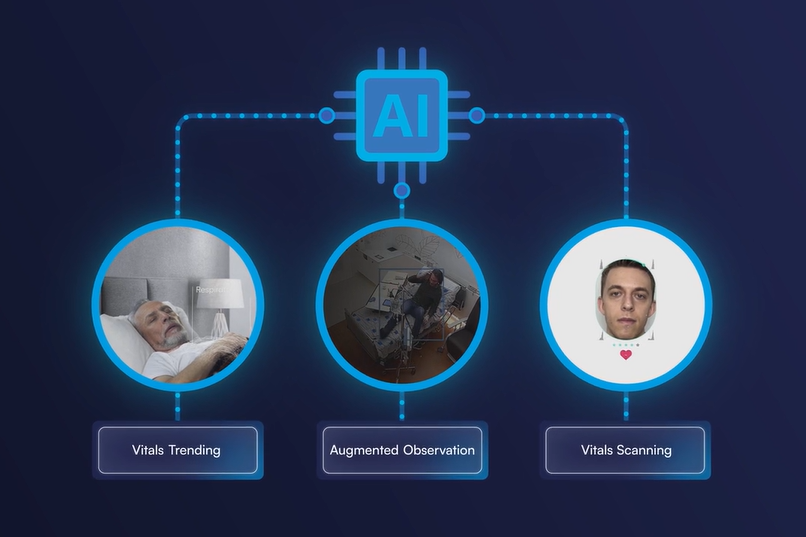Artificial Intelligence (AI) is steadily becoming a part of our everyday lives. From self-driving cars to targeted social media ads, AI is revolutionizing nearly every industry. Healthcare is no exception. At Caregility, we value AI as a tool that is capable of reducing errors, supporting clinicians, and keeping patients safe. We also recognize that AI is not without its limitations and cannot replace the experience, compassion, and empathy of professional healthcare workers.
The Utilization of AI in Healthcare
The healthcare industry is no stranger to incorporating technology to deliver groundbreaking treatments while reducing costs and improving patient outcomes. Robotic surgeries, approved in 2000, are just one example of machine learning. In recent years, AI technology has become commonplace in our smartphones, watches, and other wearable devices to monitor our vital signs, ovulation cycles, cardiac rhythms, glucose levels, and sleep patterns.
The applications in development appear limitless. The following are additional examples of AI in healthcare that are already underway, or we can expect to encounter in the near future:
- Enhanced genome sequencing to generate targeted treatments for genetic conditions
- Reduced time and money to discover, develop, and test new drugs
- Interpretation of diagnostic images to support clinical decision-making
- Virtual reality technology that allows medical students to practice surgical procedures
- Brain-machine interfaces to help patients with neurological difficulties communicate or function
- Assistive technologies that promote safety and autonomy so aging or disabled populations can remain in their homes
These cutting-edge concepts require deep learning, a type of advanced machine learning in which AI learns and adapts from its data without human intervention. There are many layers of deep learning, where algorithms use their neural networks, which function like the human brain, to recognize patterns and predict outcomes.
AI may have the advantage of processing information much faster than the human brain, but it has yet to master the qualities of human nature and emotion. The goal is not for AI to replace the expertise of a skilled clinician but to optimize the way care teams capture and use clinical information. Still, it would be naive to underestimate the potential power of AI, given its relatively quick integration, growth, and impact. This is why we must begin the conversation about how to responsibly utilize AI without overstepping boundaries.
What is Responsible Health AI?
As advancements in AI continue, we must consider the impacts on transparency, privacy, cost, efficiency, and person-centered care. Since there is hardly anything more personal or private than our health information, we must navigate a delicate balance that keeps ethics and patient care at the forefront. According to the editorial Responsible AI in Healthcare: Opportunities, Challenges, and Best Practices, responsible AI “seeks to ensure that AI systems are developed and deployed in a manner that is ethical, fair, transparent, accountable, and beneficial to all users.”
How Caregility Uses AI to Empower Nursing Care
Nurses comprise the largest component of the healthcare workforce, with over 5.2 million active nurses nationwide. Not surprisingly, nurses spend the majority of their time in direct patient care. They perform ongoing assessments, administer medications, and complete tasks at the direction of physicians. While nurses may constantly interact with patients, they report a lack of “presence,” meaning their ability to share in the human experience with patients. Nurses frequently cite increasing documentation requirements, high-acuity workloads, and staffing shortages as factors that limit quality time with patients.

This is where Caregility’s AI capabilities make a difference. By automating certain tasks, we can afford nurses the time necessary to provide compassionate, individualized care. Here are the ways we accomplish this:
Augmented Observation. One nurse can’t be everywhere. Computer vision technology acts as an extra layer of patient safety protection to detect behaviors that could result in patient injury or adverse events, such as falls, elopement, or violence. Our iObserver application incorporates remote patient sitters to observe up to 12 patients simultaneously. With two-way audio and visual and Augmented Observation capabilities, the virtual observer can intervene rapidly by redirecting the patient or sending an alert for assistance to the bedside team.
Vitals Trending. Monitoring resting heart rate, respiratory rate, and movement is crucial in evaluating a patient’s health status. In most traditional healthcare settings, vital signs are obtained at prescribed intervals or as needed, which can delay care if the patient is deteriorating. Furthermore, frequent vital sign checks can be disruptive to the patient’s rest and recovery. With Caregility’s continuous and contactless vitals monitoring, nurses can capture patient vitals continuously, review trends over time, and receive alerts when a significant change in patient condition is identified.
Vitals Scanning. Make the most of telehealth visits with virtual vital sign scanning. Facial scanning software obtains the patient’s blood pressure, heart, and respiratory rate in less than a minute to support remote clinical evaluations. This information is useful for patient follow-up visits, as well as remote monitoring in the home setting.
AI will never replace or replicate the warm touch, listening ear, or clinical judgment of a nurse. However, Responsible Health AI can transform the healthcare landscape through enhanced patient access to care and provider collaboration. The key is to develop processes that enable clinicians to work more efficiently without creating disconnection or distrust. Caregility remains committed to this goal by integrating progressive technology and innovative workflows without sacrificing excellent human-based care.









